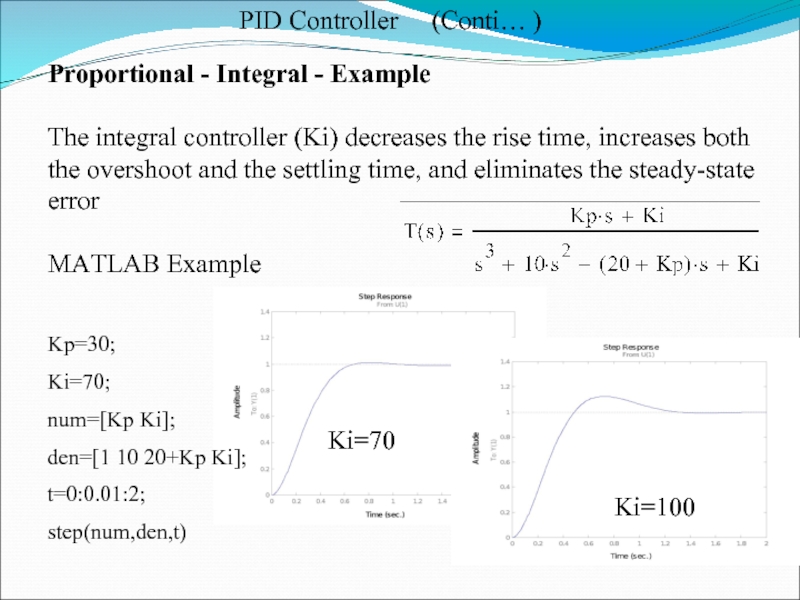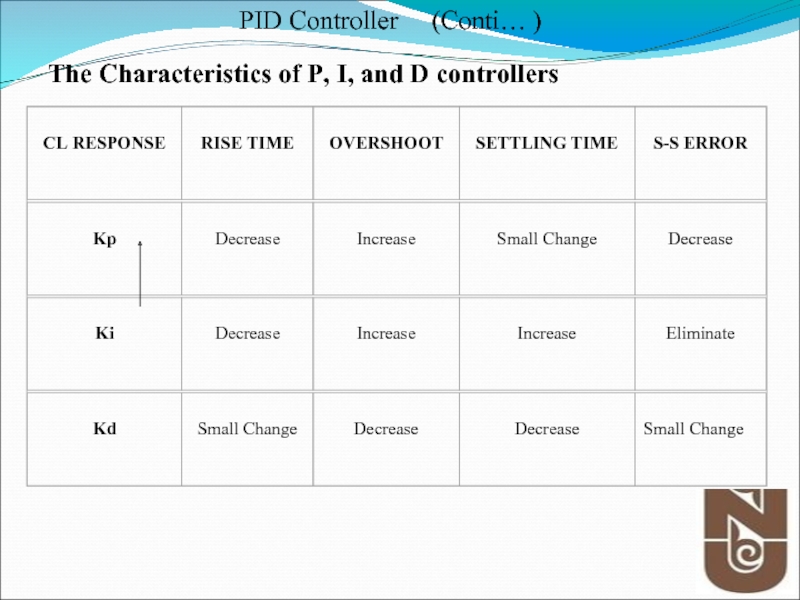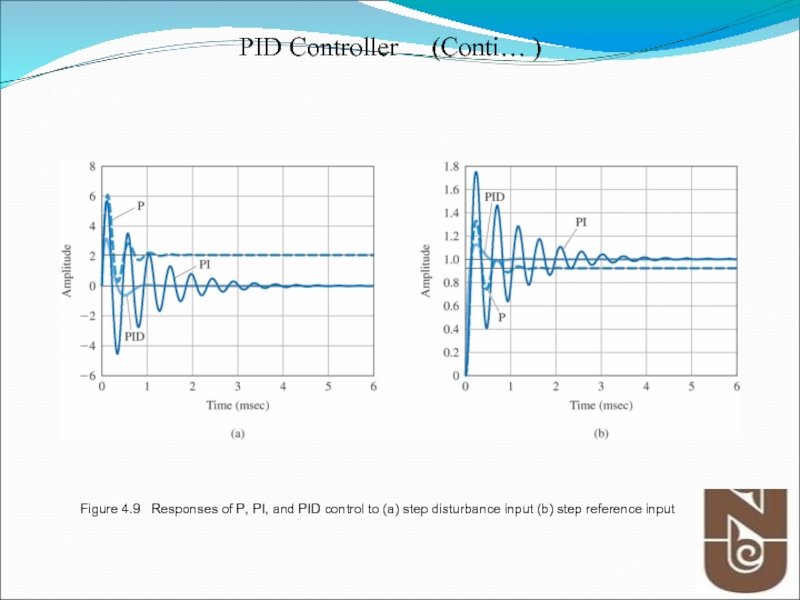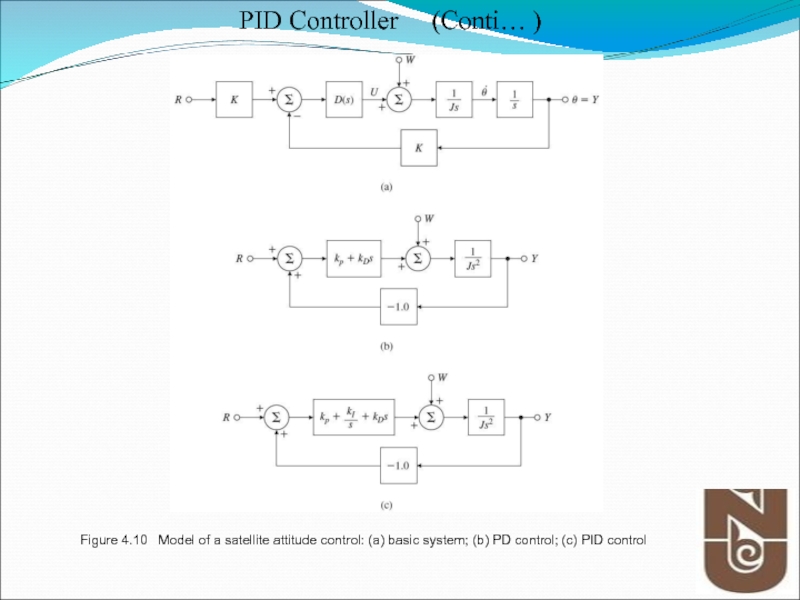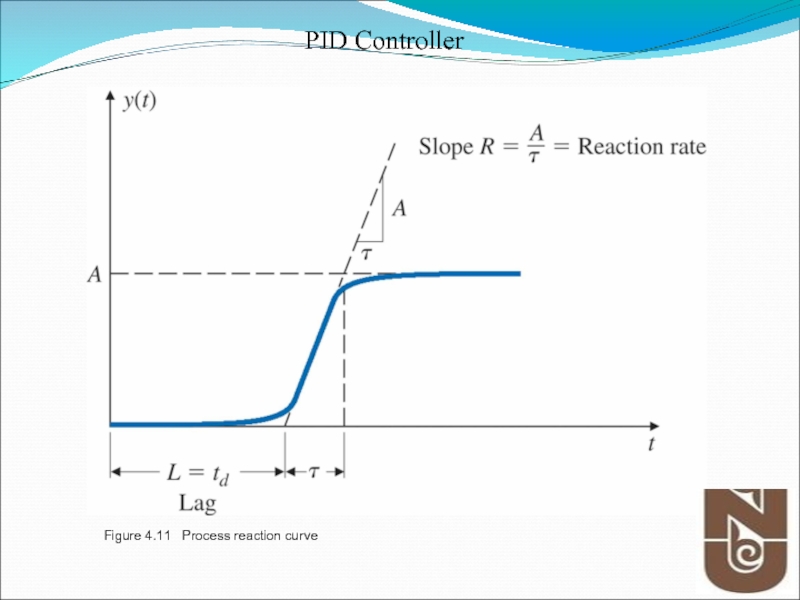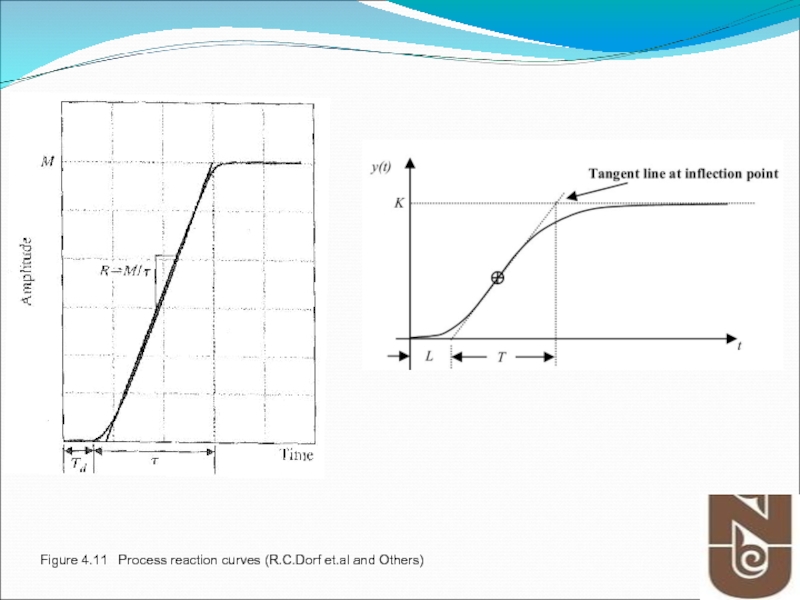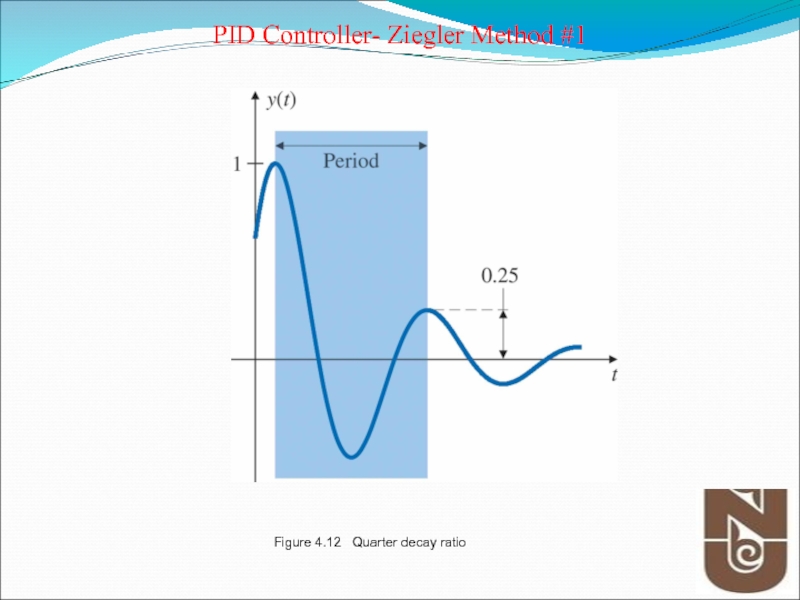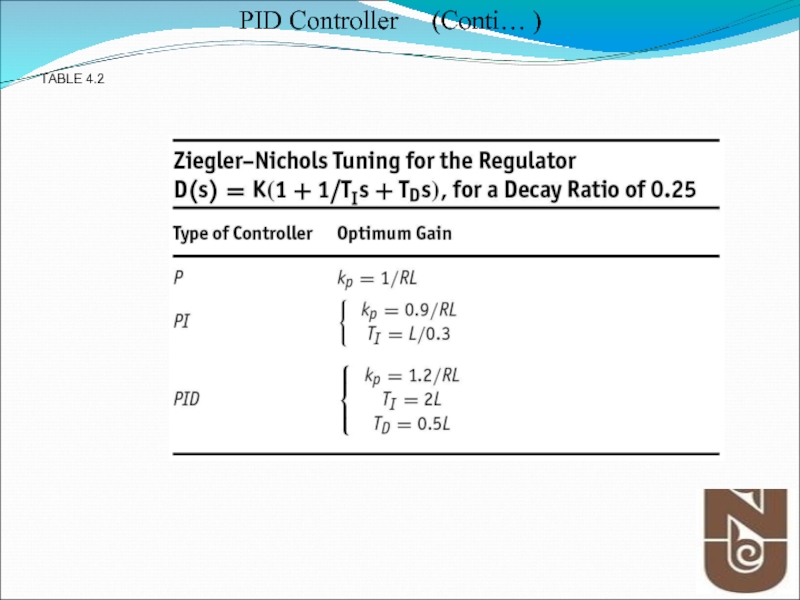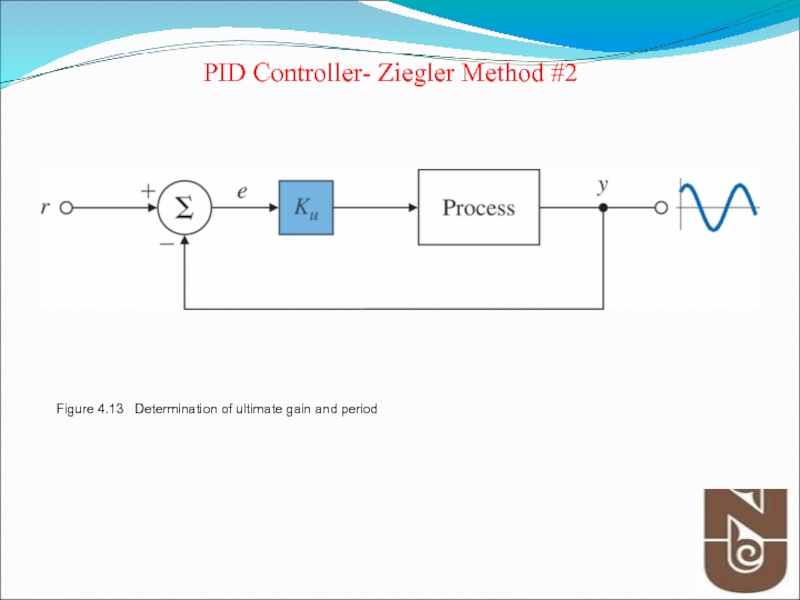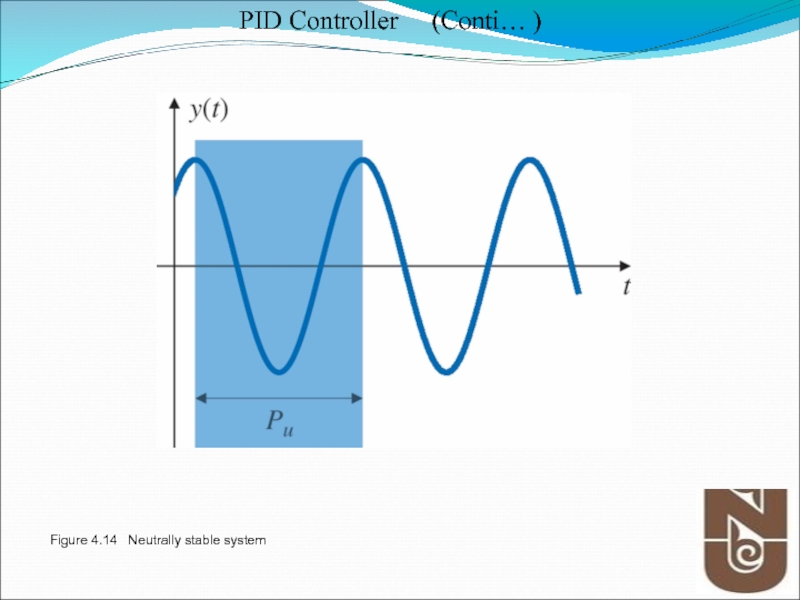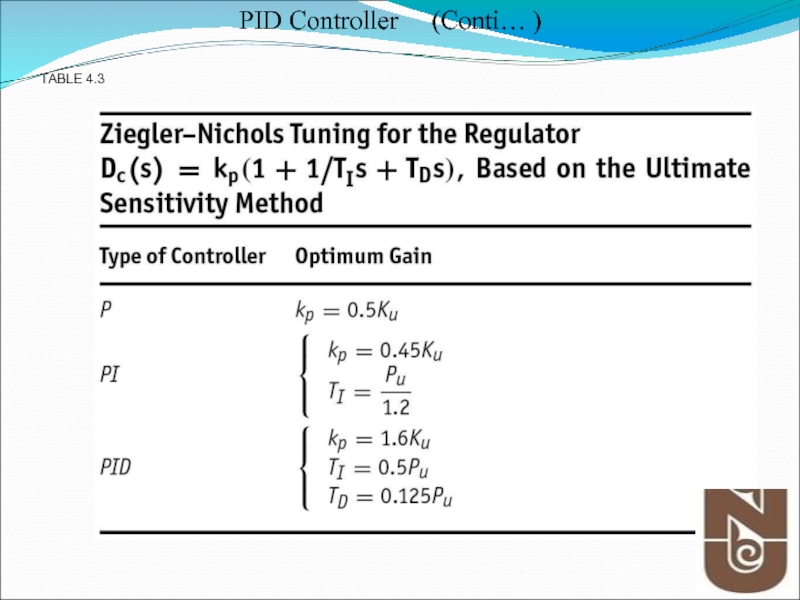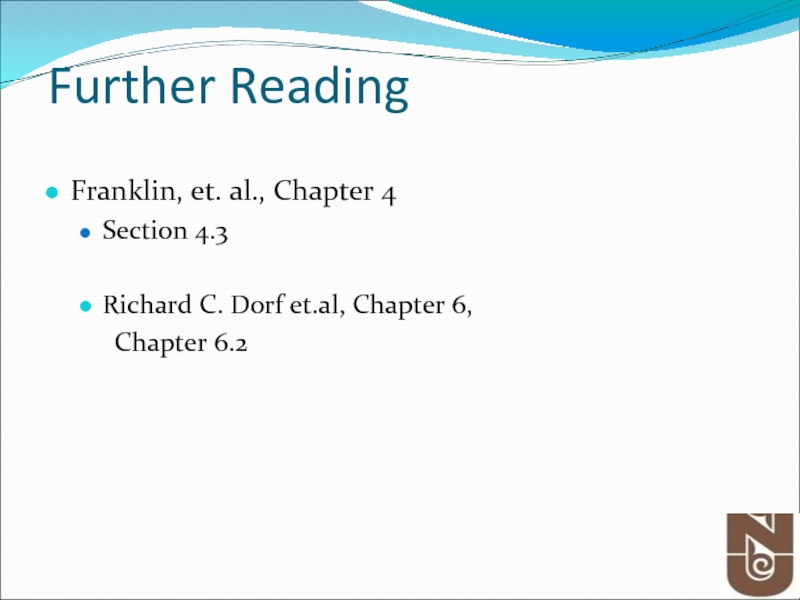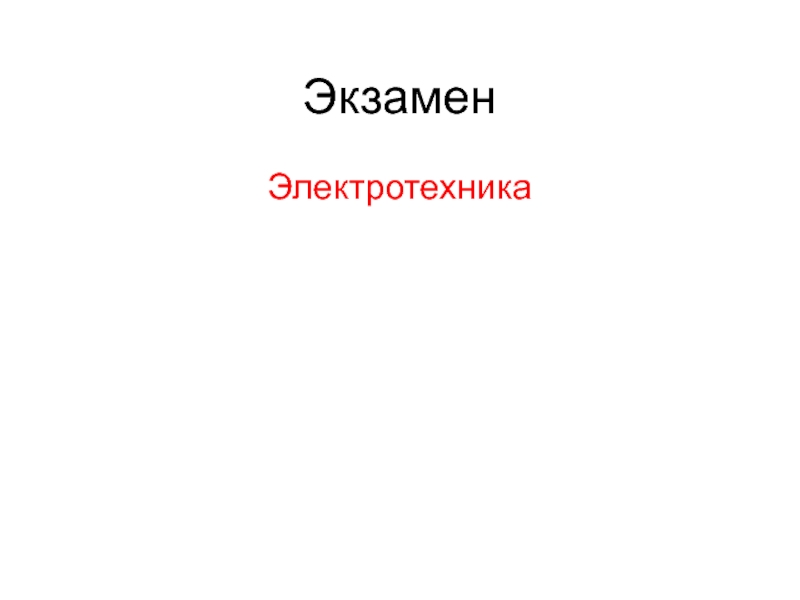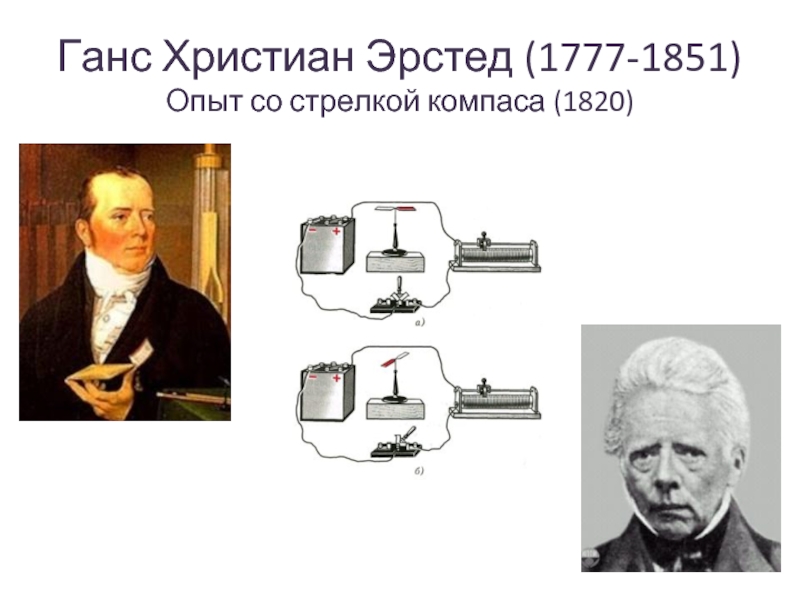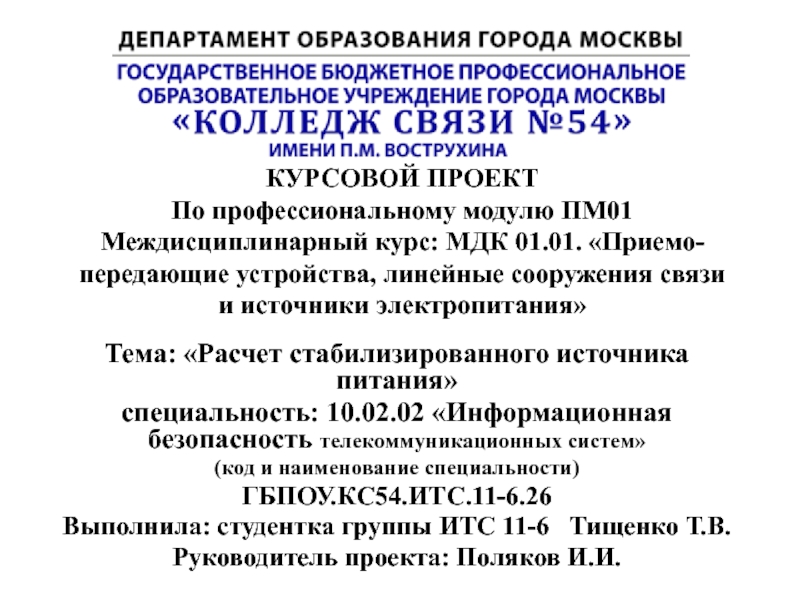- Главная
- Разное
- Дизайн
- Бизнес и предпринимательство
- Аналитика
- Образование
- Развлечения
- Красота и здоровье
- Финансы
- Государство
- Путешествия
- Спорт
- Недвижимость
- Армия
- Графика
- Культурология
- Еда и кулинария
- Лингвистика
- Английский язык
- Астрономия
- Алгебра
- Биология
- География
- Детские презентации
- Информатика
- История
- Литература
- Маркетинг
- Математика
- Медицина
- Менеджмент
- Музыка
- МХК
- Немецкий язык
- ОБЖ
- Обществознание
- Окружающий мир
- Педагогика
- Русский язык
- Технология
- Физика
- Философия
- Химия
- Шаблоны, картинки для презентаций
- Экология
- Экономика
- Юриспруденция
Review, PID controller презентация
Содержание
- 1. Review, PID controller
- 2. “Live as if you were to die
- 3. Steady State Error (ess) Steady-state error is
- 4. Steady State Error (ess)
- 5. Steady State Error (ess)- Multiple inputs
- 6. Classical Controller- PID Controller
- 7. Introduction More than half of the industrial
- 8. PID Control A closed loop (feedback) control
- 9. When PID Control is Used PID control
- 10. Output equation of PID controller in time domain
- 11. Proportional Control A proportional controller attempts to
- 12. Integral Control Time Output
- 13. Proportional-Integral Control The combination of proportional and
- 15. Tips for Designing a PID Controller
- 16. The Characteristics of P, I, and D
- 17. Proportional Control By only employing proportional control,
- 18. Tips for Designing a PID Controller
- 19. num=1; den=[1 10 20];
- 20. Proportional Control - Example The proportional
- 21. Kp=300; Kd=10; num=[Kd Kp]; den=[1 10+Kd 20+Kp];
- 22. Proportional - Integral - Example The
- 23. The Characteristics of P, I, and D controllers PID Controller (Conti… )
- 24. Figure 4.9 Responses of P, PI,
- 25. Figure 4.10 Model of a satellite
- 26. Figure 4.11 Process reaction curve PID Controller
- 27. Figure 4.11 Process reaction curves (R.C.Dorf et.al and Others)
- 28. Figure 4.12 Quarter decay ratio PID Controller- Ziegler Method #1
- 29. TABLE 4.2 PID Controller (Conti… )
- 30. Figure 4.13 Determination of ultimate gain and period PID Controller- Ziegler Method #2
- 31. Figure 4.14 Neutrally stable system PID Controller (Conti… )
- 32. TABLE 4.3 PID Controller (Conti… )
- 33. Further Reading Franklin, et. al., Chapter 4
Слайд 1
Review, PID Controller
Md Hazrat Ali
Department of Mechanical Engineering
School of Engineering,
Nazarbayev University
Слайд 2“Live as if you were to die tomorrow. Learn as if
― Mahatma Gandhi
Today’s Quote:
Слайд 3Steady State Error (ess)
Steady-state error is defined as the difference between
Note: Steady-state error analysis is only useful for stable systems. You should always check the system for stability before performing a steady-state error analysis.
Слайд 7Introduction
More than half of the industrial controllers in use today utilize
When the mathematical model of the plant is not known and therefore analytical design methods cannot be used, PID controls prove to be most useful.
Design PID control
Know mathematical model ☞ various design techniques
Plant is complicated, can’t obtain mathematical model ☞
experimental approaches to the tuning of PID controllers
Слайд 8PID Control
A closed loop (feedback) control system, generally with Single Input-Single
A portion of the signal being fed back is:
Proportional to the signal (P)
Proportional to integral of the signal (I)
Proportional to the derivative of the signal (D)
Слайд 9When PID Control is Used
PID control works well on SISO systems
PID control handles step changes well to the Set Point especially when :
Fast Rise Times
Little or No Overshoot
Fast settling Times
Zero Steady State Error
PID controllers are often fine tuned on-site, using established guidelines
Слайд 11Proportional Control
A proportional controller attempts to perform better than the On-off
The P-controller usually has steady-state errors (the difference in set point and actual outcome) unless the control gain is large.
As the control gain becomes larger, issues arise with the stability of the feedback loop.
Слайд 13Proportional-Integral Control
The combination of proportional and integral terms is important to
Eliminate the steady state error.
Time
Output
Слайд 15Tips for Designing a PID Controller
1. Obtain an open-loop response and determine
2. Add a proportional control to improve the rise time
3. Add a derivative control to improve the overshoot
4. Add an integral control to eliminate the steady-state error
Adjust each of Kp, Ki, and Kd until you obtain a desired overall response.
Lastly, please keep in mind that you do not need to implement all three controllers (proportional, derivative, and integral) into a single system, if not necessary. For example, if a PI controller gives a good enough response (like the above example), then you don't need to implement derivative controller to the system. Keep the controller as simple as possible.
Слайд 16The Characteristics of P, I, and D controllers
A proportional controller (Kp)
An integral control (Ki) will have the effect of eliminating the steady-state error, but it may make the transient response worse.
A derivative control (Kd) will have the effect of increasing the stability of the system, reducing the overshoot, and improving the transient response.
PID Controller (Conti… )
Слайд 17Proportional Control
By only employing proportional control, a steady state error occurs.
Proportional
The response becomes more oscillatory and needs longer to settle, the error disappears.
Proportional, Integral and Derivative Control
All design specifications can be reached.
PID Controller (Conti… )
Слайд 18Tips for Designing a PID Controller
1. Obtain an open-loop response and determine
2. Add a proportional control to improve the rise time
3. Add a derivative control to improve the overshoot
4. Add an integral control to eliminate the steady-state error
Adjust each of Kp, Ki, and Kd until you obtain a desired overall response.
Lastly, please keep in mind that you do not need to implement all three controllers (proportional, derivative, and integral) into a single system, if not necessary. For example, if a PI controller gives a good enough response (like the above example), then you don't need to implement derivative controller to the system. Keep the controller as simple as possible.
PID Controller (Conti… )
Слайд 20Proportional Control - Example
The proportional controller (Kp) reduces the rise time,
MATLAB Example
Kp=300;
num=[Kp];
den=[1 10 20+Kp];
t=0:0.01:2;
step(num,den,t)
K=300
K=100
PID Controller (Conti… )
Слайд 21Kp=300;
Kd=10;
num=[Kd Kp];
den=[1 10+Kd 20+Kp];
t=0:0.01:2;
step(num,den,t)
Proportional - Derivative - Example
The derivative controller (Kd)
MATLAB Example
Kd=10
Kd=20
PID Controller (Conti… )
Слайд 22Proportional - Integral - Example
The integral controller (Ki) decreases the rise
MATLAB Example
Kp=30;
Ki=70;
num=[Kp Ki];
den=[1 10 20+Kp Ki];
t=0:0.01:2;
step(num,den,t)
Ki=70
Ki=100
PID Controller (Conti… )
Слайд 24Figure 4.9 Responses of P, PI, and PID control to
PID Controller (Conti… )
Слайд 25Figure 4.10 Model of a satellite attitude control: (a) basic
PID Controller (Conti… )
Слайд 33Further Reading
Franklin, et. al., Chapter 4
Section 4.3
Richard C. Dorf et.al, Chapter
Chapter 6.2


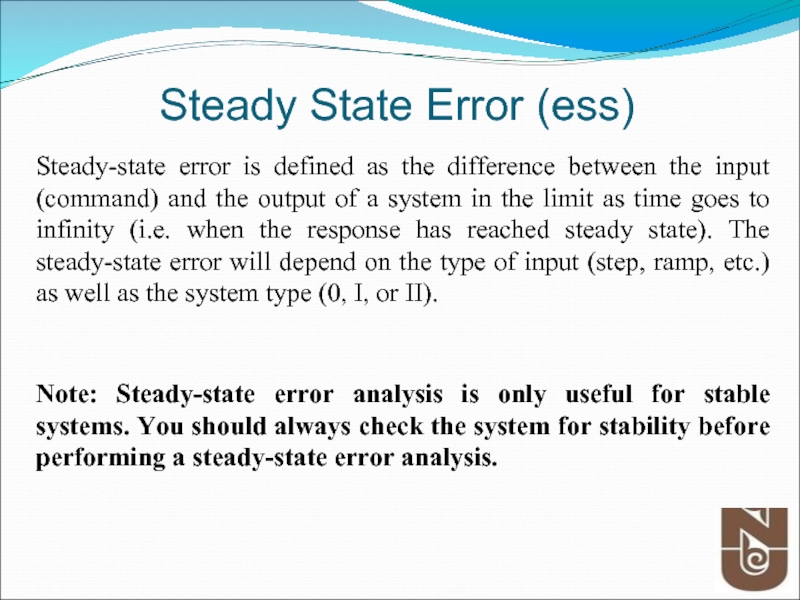
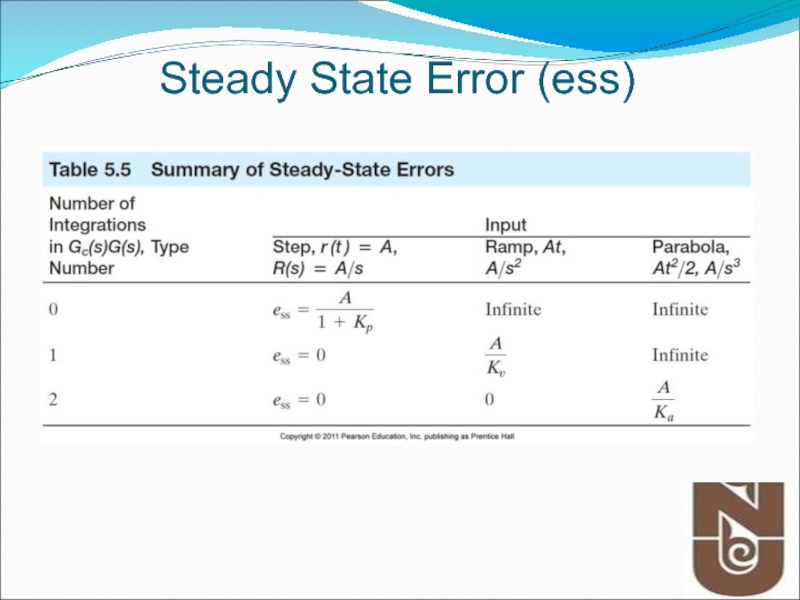
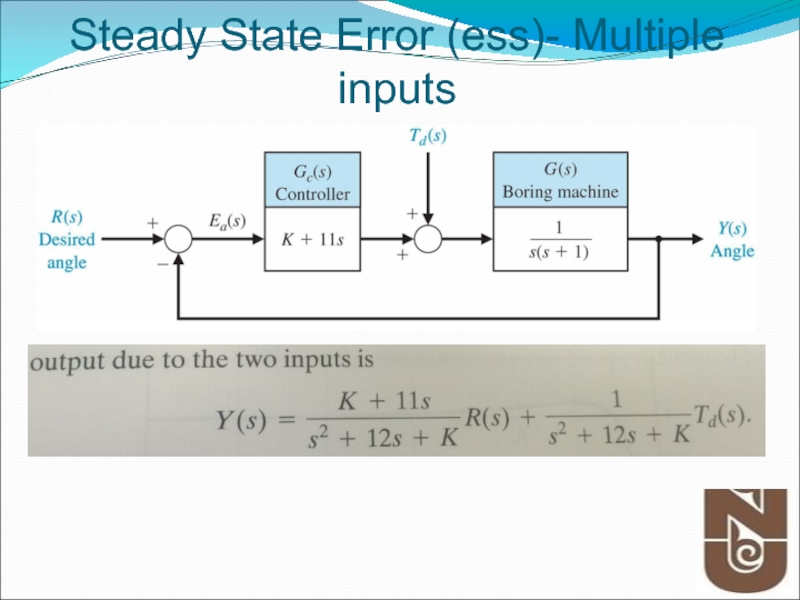
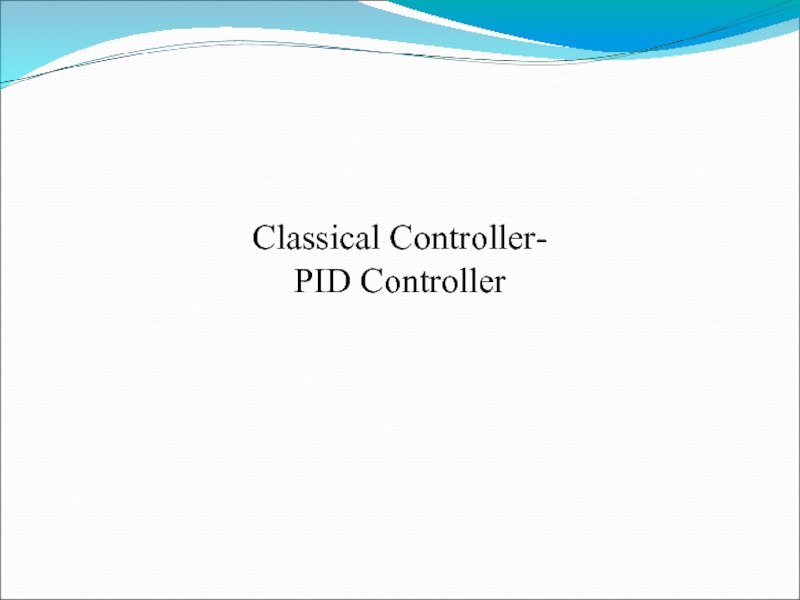
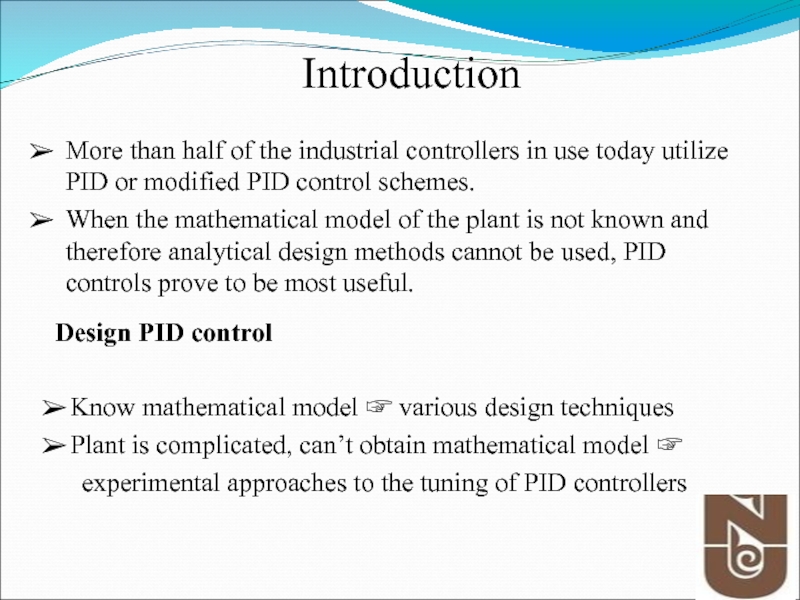
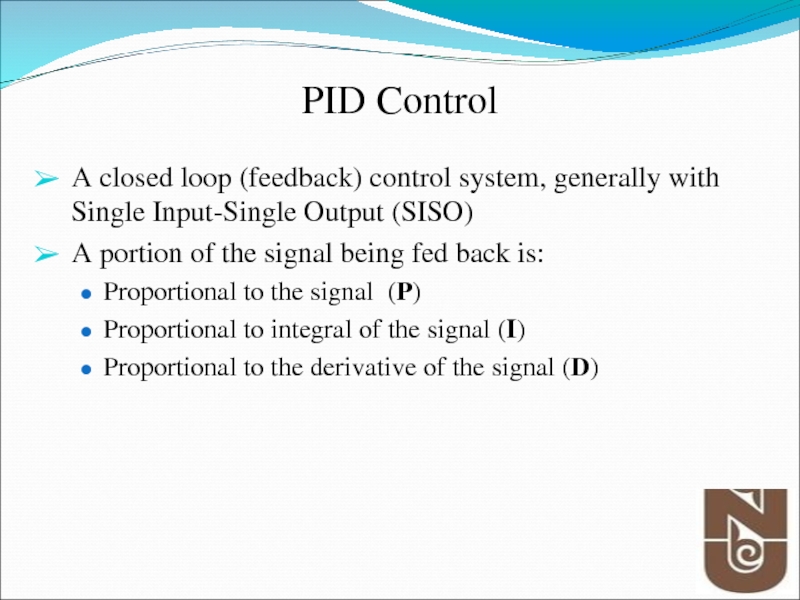
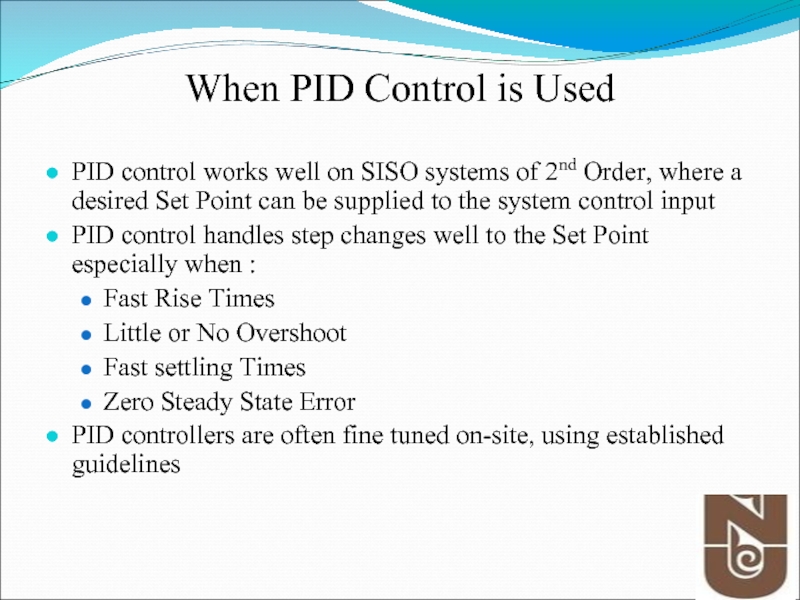
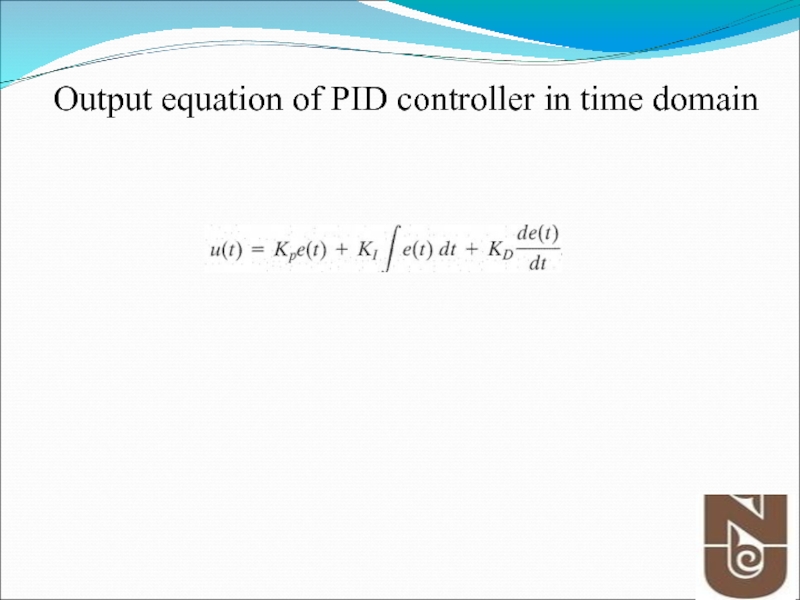
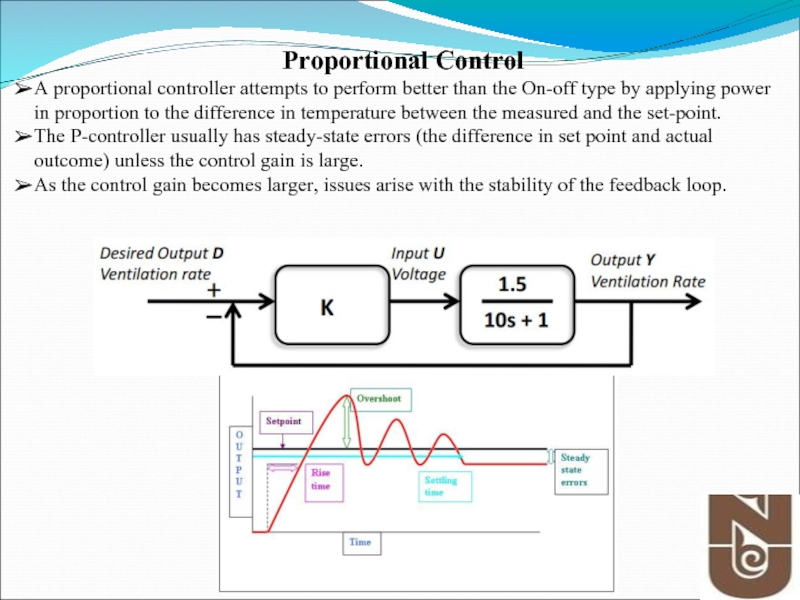
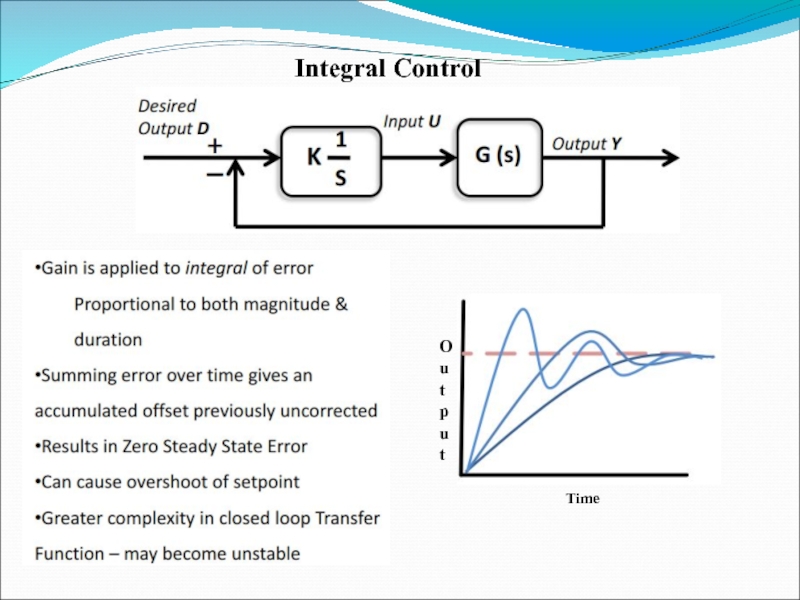
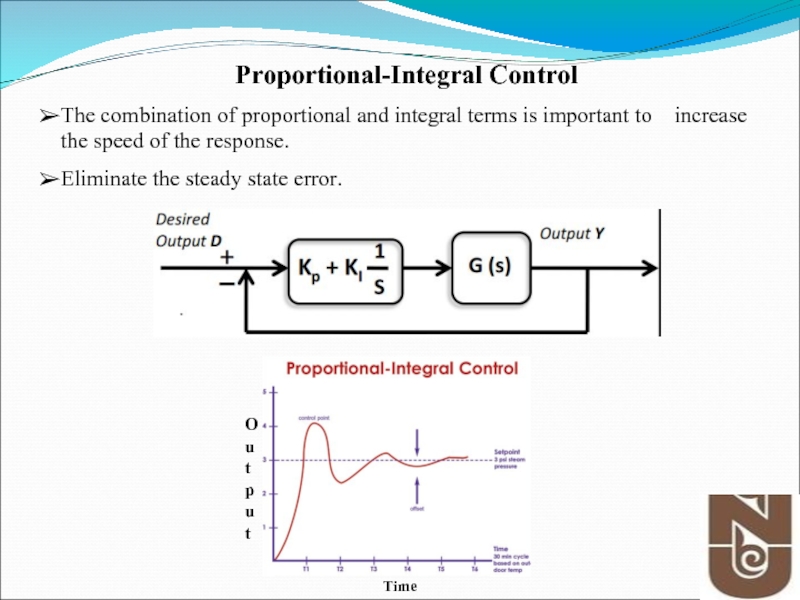
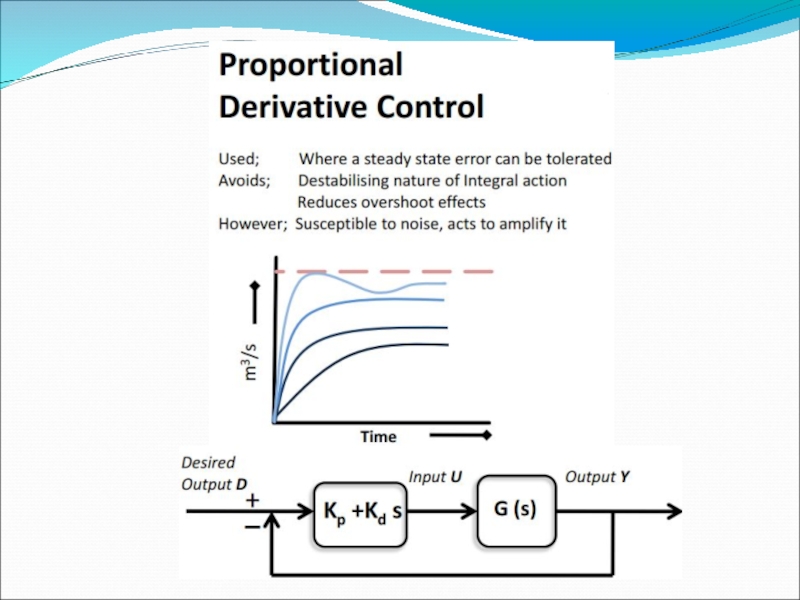
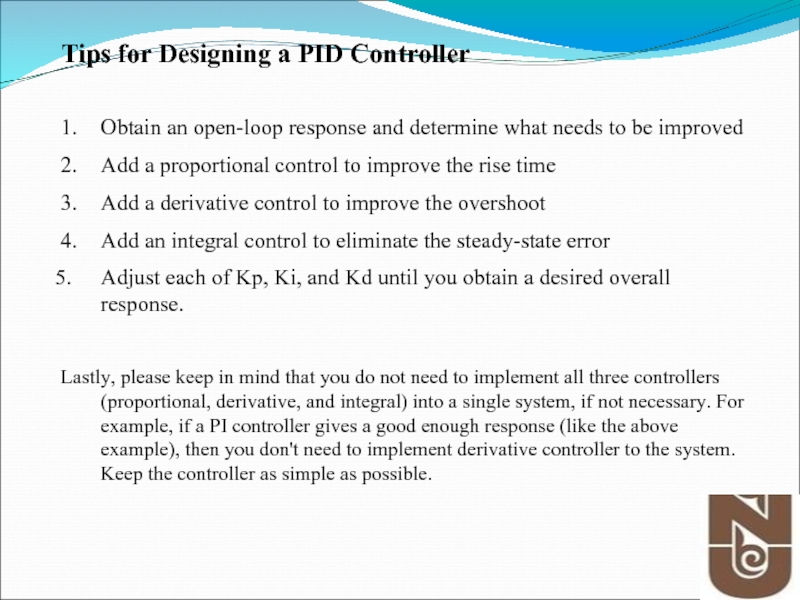
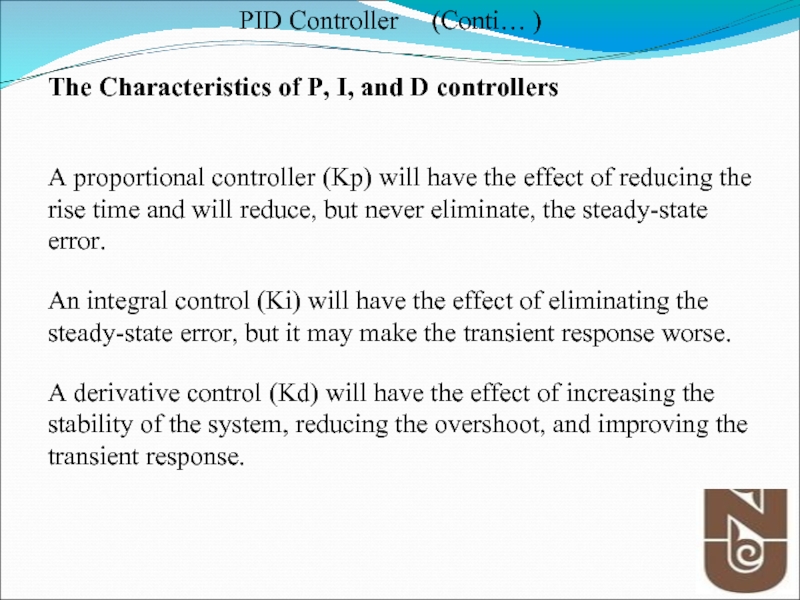
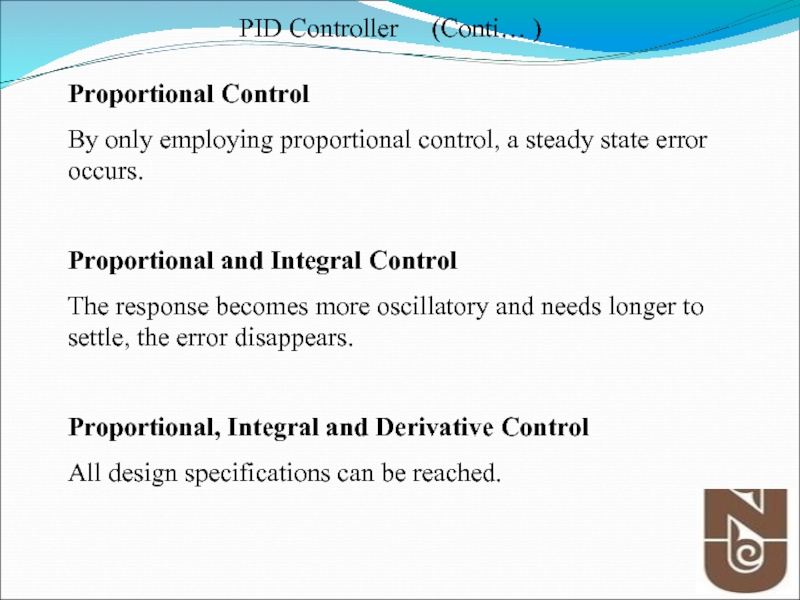
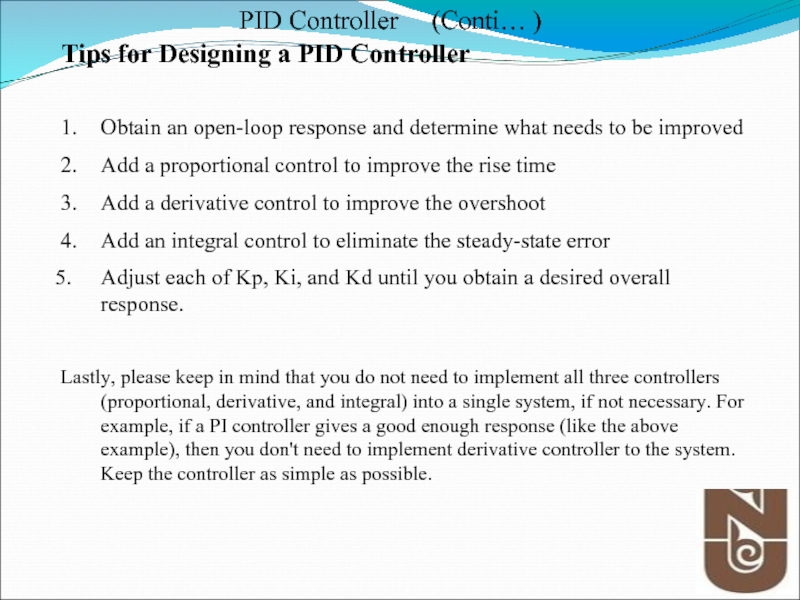
![num=1; den=[1 10 20]; step(num,den) Open-Loop Control - ExamplePID Controller (Conti… )](/img/tmb/2/104368/f91f5f0d96b94c5e177310d685e7077a-800x.jpg)
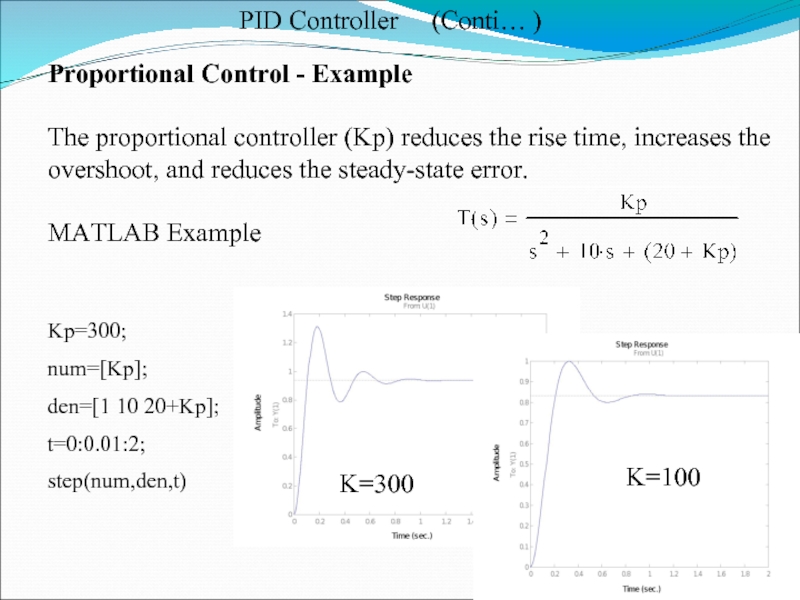
![Kp=300;Kd=10;num=[Kd Kp];den=[1 10+Kd 20+Kp];t=0:0.01:2;step(num,den,t)Proportional - Derivative - ExampleThe derivative controller (Kd) reduces both the overshoot](/img/tmb/2/104368/723bf2ca7533c972f618077c9989be4e-800x.jpg)
